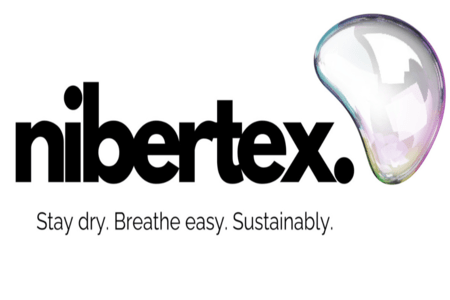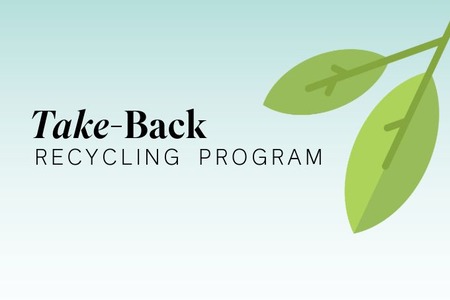
Fabric's green frontier: sustainable textile innovations
YarnsandFibers News Bureau 2019-03-25 17:35:00 – UKAs brands seek sustainable textiles to use in their collections, a new wave of innovative fibres and fabrics is emerging – some with unexpected origins. Retailers and shoppers alike are counting the cost of failing to act sustainably, and many are hunting for fabrics that have a lower environmental impact than traditional materials.
Be it reducing the chemicals used in dying or leather tanning processes, plastics in polyester, the amount of water used in cotton production or the hunt for vegan alternatives to animal fibres – the sector is shifting its approach to materials as part of a wider drive towards becoming more sustainable.
“People are reassessing what the raw materials of the future should be, and the sector is booming like never before,†explains Nina Marenzi, founder and director of not-for-profit organisation The Sustainable Angle.
Among the current innovations, lab-grown cultures and recycling are two growing areas. The reuse of agricultural waste is particularly on the rise. Companies are repurposing formerly discarded by-products and using them to create fabrics and fibres that have a low environmental impact.
“People have realised that actually we’re sitting on a gold mine, which is waste. The waste of one product can be the raw material for the next,†explains Marenzi. “That thinking has resulted in a lot of very interesting new innovation.â€
As the sector continues to expand, Drapers looks at seven developing sustainable fabrications, how they are made and what they are being used for.
Coconut wool - A relatively recently developed fabric, coconut wool uses sustainably sourced coconut waste to produce a “tree-freeâ€, soft rayon. Developed as an alternative to wool by the Australian company Nanollose, the first viable garment utilising the “Nullarbor†fibre – a top (above) – was created in December 2018. Nanollose claims it is the first wearable garment to be made from entirely tree-free rayon.
The material is created in a facility where microbes ferment liquid waste products from the food industry – including coconuts – to extract cellulose fibres. These are then dried and spun into the Nullarbor yarns. The process requires very little land, water or energy in comparison with traditional rayon or cotton production and can produce a yield in as few as 10 days. Nanollose is currently developing supply-chain connection with the Indonesian coconut production industry, with the aim to significantly increase the fibres yield in the next year.
Nanollose managing director Alfie Germano says: “We are a technology company that has also become a steward in facilitating a new raw material supply chain. The goal is to work with key partners who will simply take waste (instead of trees), produce our Nullarbor fibre, and seamlessly integrate it into their clothing supply chain with no retrofitting to existing machinery or processes required.â€
Po zu ss19 womens sneak white silver 1.jpg [£110 women's] - Po-Zu spring 19 - Pineapple leather- Pineapple “leatherâ€, or Piñatex, has swiftly gained popularity within the footwear industry, as a sustainable and vegan alternative to traditional leather. Produced primarily by the UK-based Ananas Anam company, the fabric is made using the fibres from pineapple leaves, which are a natural by-product of the pineapple farming industry. The fibres are extracted from the leaves by the pineapple farming communities, in a process called decorication. They are degummed and transformed into a non-woven mesh, which undergoes a specialised finishing process that gives it a leather-like texture. The final fabric is also entirely biodegradable.
The material is created in a closed loop production cycle. Residual leaf biomass from the pineapples is used as fertiliser or bio-fuel.
Brands including Hugo Boss, and footwear labels Po-Zu and Bourgeois Boheme, are among those to have used the fabric in their footwear collections, as an alternative to regular leather.
Mycelium leather - Smc + bolt threads mylo falabella prototype i bag.Mycelium “leather†is created from the microscopic spores produced by mushrooms.
Companies are able to cultivate these cells which naturally self-assemble into a sturdy, 3D mesh-like structure that can be compressed to become a viable material. This is then dyed and tanned to create a leather-like finish. The material is non-toxic and biodegradable, and can be produced within days.
Companies such as Bolt Threads and MycoWorks are producing this material for use across the fashion and interiors industry, and it is already finding use. Stella McCartney has experimented with mycelium leather, and created a prototype of her Falabella bag using the fabric (left).
Grape leather - Food industry by-products are a key area for fabric innovations, and alongside apple, pineapple and coconut, waste from the wine-making industry is another area being co-opted for sustainable purposes.
Grape “leatherâ€, which was developed by the Italian company Vegea, uses waste fibres and oils from wine production to create a sustainable leather alternative. The leather is created from “grape marc†– a waste material consisting of the grape skins, seeds and stalks that remain after grapes have been pressed for wine.
In 2017, Vegea was one of the winners of H&M group’s Global Change Award, which aims to encourage innovation in sustainability. The company received investment of €300,000 (£258,000) to further develop the fabric. The European parliament has also recognised Vegea as one of the top European start-ups of the 21st century.
Ocean plastic waste - Gant beacons project - Plastic pollution is an increasing focus of conversations around sustainability, and textiles that re-use plastic waste are on the rise. Examples include Seaqual, which creates recycled polyester using plastic waste salvaged from the Spanish Mediterranean coast, and Econyl, which uses waste from landfill and oceans to create a regenerated nylon.
Spanish company Seaqual works with more than 400 fishing boats to collect the waste, which can include fishing nets and plastic bottles. The plastics are sorted, and PET materials are converted into flakes and then into polymers. These are then spun into 100% polymer threads, which are subsequently woven into cloth for a variety of clothing.
The fibre has been included in denim, chinos, shirting and swimwear textiles, and lifestyle retailer Gant uses Seaqual yarn in its sustainable Beacons Project line of men’s and women’s shirts and blazers. Econyl is particularly popular with swim and sports brands, and has been used by Speedo, Volcom, La Perla and Adidas.
Lab-grown silk - Using technology inspired by the protein in spider silk, US based company Bolt Threads has developed a vegan alternative to traditionally produced silk.
The company uses bioengineering to put natural silk genes into yeast cells, which are then cultivated through fermentation using yeast, sugar and water. The liquid silk is then extracted and spun into fibres, which are then woven into fabric. The final textile, which is called Microsilk, has high tensile strength, elasticity, durability and softness.
The company is currently partnering with British designer Stella McCartney, a collaboration which began in 2017.
Stella mccartney + bolt threads moma gold dress 1 (back) oct 2017 - “It feels like everything is finally coming together and the dots are being connected between fashion, sustainability and tech innovation,†commented McCartney when the partnership was announced. Together McCartney and Bolt Labs created a Microsilk dress (above), which was displayed at the MoMA museum in New York in January 2018.
Apple skin - Zilver aw19 apple leather - Zilver autumn 19 - In the battle to combat food waste, apple leather is another innovative textile created from unwanted by-products – in this case, those of the apple juice industry. Companies creating the fabric primarily work with apple farms in the Italian Alps. The waste skin, pulp and pips from apple juice farms are transformed into “apple skin†a vegan and sustainable leather-like fabric that is fully biodegradable. The material was used in the autumn 19 collection from Brazilian sustainable brand Zilver, on biker jackets and trousers, where it gave a sturdy, structured silhouette that was indistinguishable from real leather. Footwear brand Po-Zu is also set to introduce apple leather styles for its autumn 19 collection, and says the textile is highly durable and breathable.
Market Intelligence
Ask for free sample Report

experience
Customer Base
dedicated team
Countries Served Worldwide









